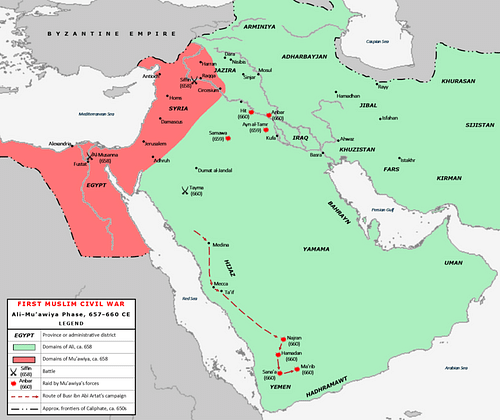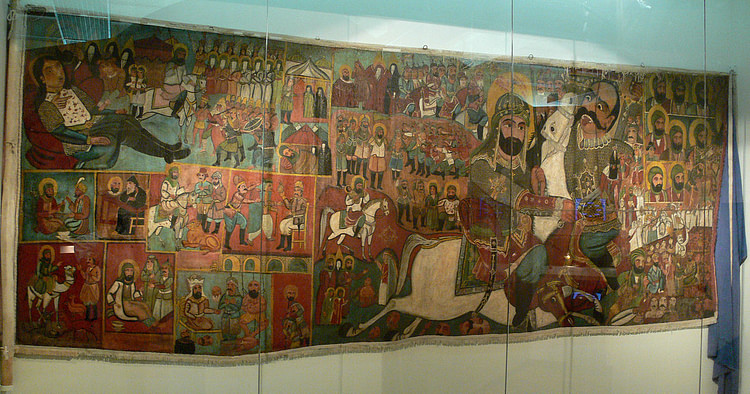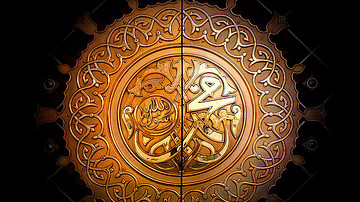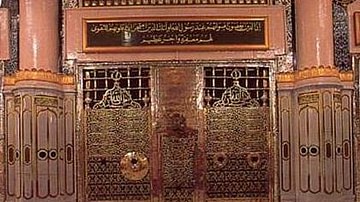
Fatimah (born between 605 and 615 CE, died sometime in 632 CE; date of death is disputed) was the youngest daughter of the Islamic Prophet Muhammad (l. 570-632 CE) and his first wife Khadija (l. 555-619 CE). Taking up after her father, Fatimah became highly spiritual and devoted to Islam. Fatimah was married to Ali ibn Abi Talib (l. 601-661 CE), a cousin of Prophet Muhammad, in 624 CE, and the marriage lasted until the end of her days. Her sons Hassan (l. 624-669/670 CE) and Hussayn (l. 626-680 CE) were the only surviving grandchildren of the Prophet and have been venerated as imams (spiritual leaders) by the Shia Muslim community, just like their father; Fatimah is termed as the mother of Imams and is revered by both Sunni and Shia Muslims.
Historical Context
Prophet Muhammad (l. 570-632 CE) faced ridicule, oppression, financial boycotts, and even physical abuse when he started preaching a novel faith – Islam – in the heartland of Arabia: Mecca, from 610 CE onwards. His biggest supporter was his wife Khadija, a woman 15 years his senior but, according to Islamic sources, one with the deepest respect for her husband, which the latter reciprocated in kind. The couple had six children, two boys, Abdullah and Qasim (both of whom died in infancy), and four daughters, Zainab (l. 599-629 CE), Ruqayyah (l. 601-624 CE), Umm e Kulthum (l. 603-630 CE), and Fatimah (born between 605 and 615 CE). However, Shia Muslims consider only Fatimah to be the biological daughter of the Prophet, and the rest to be Khadija's children from her previous husbands (she had been married and widowed twice before), while Sunni Muslims maintain that all four daughters were Muhammad's.
Facing atrocities in Mecca, after the death of Khadija and Abu Talib (Muhammad's uncle and guardian) in 619 CE, the Prophet's followers turned to Medina for asylum. The hegira (migration) in 622 CE, as it was later called, became a pivotal point in the history of Islam as the Prophet acquired control of the city of Medina as a result. Prophet Muhammad, now a king, initiated a decade-long political and military struggle against his former tormentors and their supporters. This culminated in the fall of Mecca in 629/630 CE and the subjugation of most of Arabia under the sway of Islam by the time of his death in 632 CE.
Early Life & Marriage to Ali
Fatimah, the youngest child of Khadija and Muhammad, was born in Mecca between 605 CE and 615 CE. The young girl lost her mother in 619 CE, a year remembered as the 'Year of Sorrow' in the Islamic tradition. From that point on, Prophet Muhammad played an important role in her upbringing and instilled in her the qualities that he admired in his wife, such as modesty, humility, spirituality, and generosity. When the Muslims established themselves in Medina, with Prophet Muhammad as the leader of the city-state, armed conflict broke out. Though the women did not take part in any of the battles that ensued, they did serve auxiliary roles such as medics, and Fatimah was often found on the battlefield, tending to the wounds of the injured.
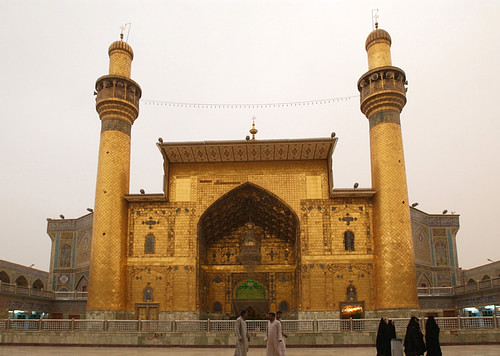
In 624 CE, Ali ibn Abi Talib (l. 601-661 CE), a cousin of the Prophet, who had also distinguished himself as a heroic and loyal supporter of Islam, approached Muhammad to request his permission to marry Fatimah, which the latter granted. After the wedding, the couple moved to a house close to that of the Prophet. Fatimah and Ali had five children; two girls, Zainab bint Ali (l. 626-682 CE) and Umm e Kulthum bint Ali (b. 627 CE), and three boys, Mohsin (probably died in infancy, date disputed), Hassan (l. 624-669/670 CE) and Hussayn (l. 626-680 CE). The latter two would become instrumental in Shia ideology as, like Ali, they are considered imams, the spiritual descendants of the Prophet in Shiism.
All of Fatimah's sisters predeceased her without any surviving children, and the grief-stricken Prophet Muhammad found solace in the sight of his youngest daughter and her children, during his last years, until he passed away in 632 CE as the unrivaled master of almost the entire Arabian Peninsula.
Succession of the Prophet's Empire
After Muhammad's death, the Muslim community was pushed into chaos and division. A friend and father-in-law of the Prophet, namely Abu Bakr (l. 573-634 CE) assumed the title of Caliph, however, this move was resisted by some who deemed only Ali, Fatimah's husband, as the legitimate heir of Muhammad. Since the Prophet had given no explicit orders about succession, Abu Bakr's stance was held. Ali was not part of the committee, some of whom wanted to revert to tribalism and home rule (and would have succeeded if Abu Bakr had not intervened), that decided the community's fate, and that would create problems later on.
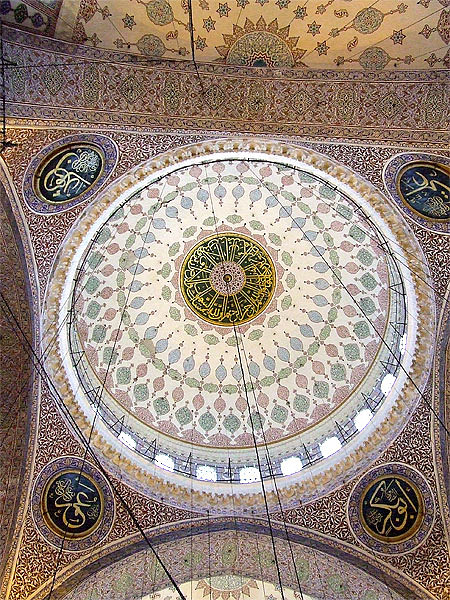
Many sources claim that Umar ibn al-Khattab (l. 584-644 CE), who would later become the second Caliph of Islam, confronted Ali outside his house, while Fatimah remained inside (or according to some sources, came out), demanding that he pledge fealty to Abu Bakr. The altercation became intense and Umar, who was known for his fiery temper, threw out threats to coerce Ali's allegiance for Abu Bakr. There is disagreement as to what happened later; some maintain that the argument did not turn into a physical confrontation, and early sources make no mention of it. Later sources, starting from the 10th century CE, state that physical violence was involved, however, these narratives are inconsistent and the chronology is debated. There are many versions of the story (each different from the other); some claim that Fatimah was pregnant at the time and the confrontation resulted in her miscarriage, while sources before the 10th century CE state that said child, Mohsin, had died in infancy and that Fatimah was not involved in any physical confrontation.
Ali reconciled with Abu Bakr and even adopted one of his sons, namely, Muhammad ibn Abu Bakr (l. 631-658 CE) after his death, who remained a devout follower of Ali until his death (he was murdered by a general operating under Muawiya, the rival of Ali). During Umar's tenure (634-644 CE), Ali served as his deputy and advised him in several important decisions like the development of the Islamic calendar and starting developmental projects in the empire. Umar married Ali's daughter Umm e Kulthum bint Ali (though the marriage may not have been consummated), to cement his relationship with both Ali and the Prophet (who had married one of his daughters), however, some Shia sources reject this historical narrative (while others accept it).
Dispute over the Possession of Fadak
The dust had barely settled over the succession dispute, from which Ali seems to have withdrawn his claim, seeing that the people had accepted Abu Bakr as their leader or, according to Shia sources, due to intimidation or lack of support, another quarrel broke out. This was a property dispute and the said land was the half of a garden in the Khaybar oasis, named Fadak, which was acquired by the Prophet as part of a treaty (629 CE), and according to some, passed into Fatimah's possession during his lifetime. Abu Bakr asserted that since the land had been acquired as part of a treaty, in the time of the Prophet, who was then the ruler of the state, this land thenceforth belonged to the state and not to Muhammad personally.
The Caliph backed up his claim by quoting the words of Prophet Muhammad himself who had mentioned that the land would pass onto the people after his death (claim disputed). However, Fatimah, who was conscious of her inheritance rights, claimed that the land had been passed into her possession and that she had every right to claim it as her personal property. The heated debate that followed failed to change anything; Fadak was confiscated by the state.
Abu Bakr's actions in this regard have been subject to incessant debate; according to some, he regretted his decision on his deathbed. As for Fatimah, sources are divided, some say that the lady of Islam refused to speak to the Caliph for the rest of her days, while others claim that the two reconciled eventually and that Abu Bakr attended her funeral. The truth remains shrouded in mystery.
Death & Ahl al-Bayt (The Household of the Prophet)
Fatimah passed away only some months after her father, but the date of her death is disputed. The most commonly held belief about her death is that she was broken by the sorrow after her father's demise and acquired a disease, probably pulmonary tuberculosis, that ultimately proved fatal. She was probably buried in the Jannat al-Baqi graveyard (also known simply as Baqi), but her gravesite is not known, there is speculation that this was done at her behest, to show her dissatisfaction with the people, but others claim that the information was simply lost to history.
Ali took no other wife when she was alive but did marry other women after her death following the customs of the time. He became the fourth Caliph of Islam in 656 CE when Uthman ibn Affan was murdered by rebel soldiers. Though Ali spent his entire tenure (656-661 CE) trying to bring order to an empire plunged into tumult, in what was later termed as the First Fitna (656-661 CE), his commitment to justice and inclination towards chivalry earned him the admiration of later generations.
Ali was murdered by a renegade group called the Kharijites, and Hassan, who succeeded his father, and who is also included in the Rashidun Caliphate by some Sunni Muslims, was forced to abdicate in favor of Muawiya (r. 661-680 CE; the founder of the Umayyad Dynasty), his father's rival. He was later poisoned by one his wives in 669/670 CE (some say that Muawiya was involved).
Hussayn, the younger brother, lived until Muawiya passed away and his son Yezid (r. 680-683 CE) ascended the throne. Hussayn set upon for Kufa, Iraq, which was once his capital. En route to his destination, Hussayn's feeble force, comprising mostly of his family members, numbering no more than 72 fighters, was intercepted by the Umayyad army and massacred at Karbala (680 CE). Hussayn's death created an uprising that lasted for over a decade and ended with a victory for the Umayyads when they attacked Mecca in 692 CE, however, his legacy lives on to this day. Shia Muslims commemorate the anniversary of the Battle of Karbala (680 CE) in the annual Ashura festival (9th and 10th Muharram of the Islamic calendar). Fatimah's household remains a focal point in the Islamic tradition, for both Sunnis and Shias; the latter even display an insignia representing Fatimah's hand, especially during the Ashura but also in routine.
Legacy
Known by several nicknames including al-Zahra (the radiant), al-Siddiqah (the truthful woman), and al-Tahirah (the pure woman), Fatimah has been described as a beautiful, brave, and very modest woman. Those who knew her, likened her to the Prophet of Islam, in both character and personality. To the Muslims, her love for her father perfectly embodies a saying often accredited to the Prophet: “daughters are a blessing from God” (Some pre-Islamic Arabs considered the birth of a daughter as bad luck).
Fatimah's modesty has also inspired many Muslim women throughout history, the headcovers worn by Muslim women, of which there are several versions, including the hijab, are not merely a religious symbol and statement but also a way for the Muslimahs (Muslim women) to emulate the example of women like Fatimah. Fatimah's memory lives on not only through the feats of her family, known as the Ahl al-Bayt (the household of the Prophet) but also owing to the moral and religious values that she held important.
